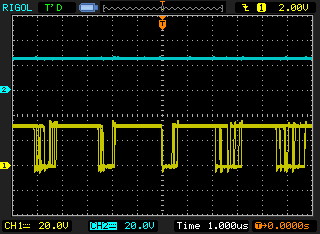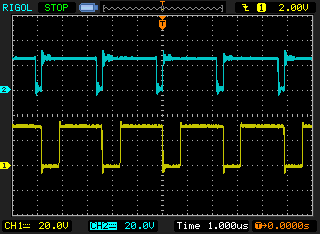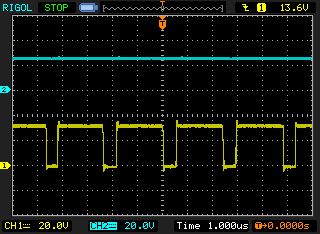Tool/software:
I am using a LM5177DCPR in a Buck-Boost application. I am seeing strange bi-modal behavior which I cannot explain.
I have two questions:
1. What is causing this bi-modal draw of excess current.
2. Should the IC be getting this hot?
The output voltage is set to 24V.
This is how I can recreate the anomally:
1. At start up, the converter is running off 31V input with no load; it is drawing 80mA. (top of chip temp = 57C)
2. I switch the input voltage to 28V and increase the load to 100mA for 5 minutes. (top of chip temp = 74C)
3. I switch the input voltage back to 31V. The input current goes up when I would expect it to go down.
4. I remove the load and the input current is 200mA. It does not return to the lower current draw in step 1. (top of chip temp = 82C)
5. If I quckly restart the system the higher current draw remains.
6. If I power down long enough for it to cool off, the no load current draw goes back down to 80mA.




